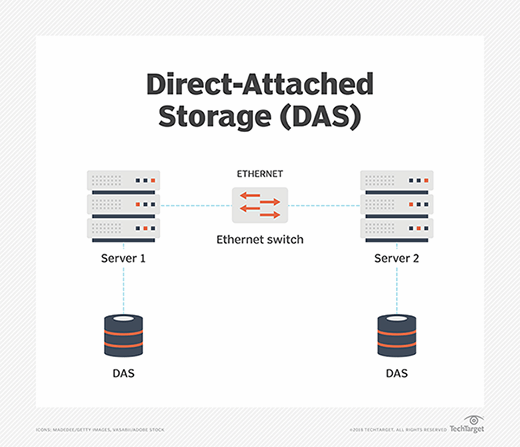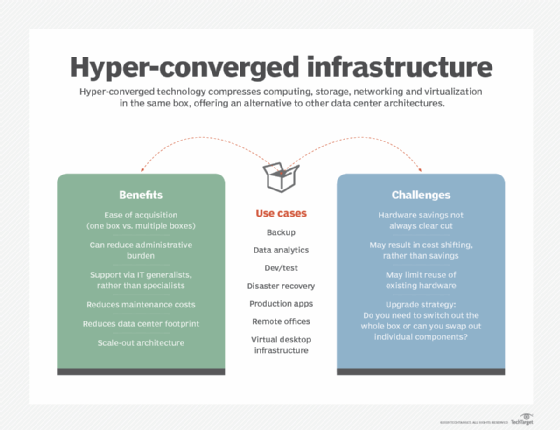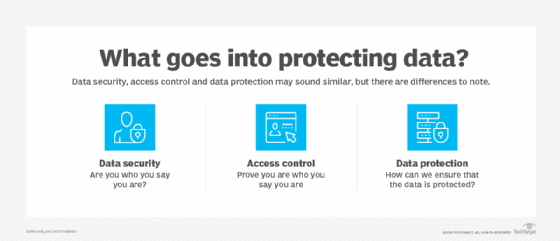direct-attached storage (DAS) (original) (raw)
What is direct-attached storage (DAS)?
Direct-attached storage (DAS) is a type of storage that is attached directly to a computer without going through a network. The storage might be connected internally or externally. Only the host computer can access the data directly. Other devices must go through the host computer to work with the data.
Most servers, desktops and laptops contain an internal hard disk drive (HDD) or solid-state drive (SSD). Each of these devices is a form of direct-attached storage. Some computers also use external DAS devices. In some cases, an enterprise server might connect directly to drives that are shared by other servers.
A direct-attached storage device is not networked. There are no connections through Ethernet or Fibre Channel (FC) switches, as is the case for network-attached storage (NAS) or a storage area network (SAN).
An external DAS device connects directly to a computer through an interface such as Small Computer System Interface (SCSI), Serial Advanced Technology Attachment (SATA), Serial-Attached SCSI (SAS), FC or Internet SCSI (iSCSI). The device attaches to a card plugged into an internal bus on the computer.
Other types of storage, such as optical devices and tape, are technically DAS as they are directly attached to a system, either internally or externally. However, references to DAS are usually related to storage devices such as HDDs or SSDs.

How DAS works
Direct-attached storage pros and cons
DAS can provide users with better performance than networked storage because the server does not have to traverse a network to read and write data, which is why many organizations turn to DAS for applications that require high performance. DAS is also less complex than network-based storage systems, making it easier to implement and maintain, and it is cheaper.
DAS is not without challenges, however. It has limited scalability and lacks the type of centralized management and backup capabilities available to other storage platforms. In addition, it can't be easily shared and doesn't facilitate failover should the server crash. Because of these challenges, conventional forms of DAS might not be suited for many enterprise workloads.
However, advancements in virtualization technologies have breathed new life into DAS, a trend that's been especially apparent in the many hyperconverged infrastructure (HCI) systems now on the market. An HCI system is made up of multiple server and DAS storage nodes, with the storage consolidated into logical resource pools, providing a more flexible storage solution than conventional DAS.

What are the differences between SAN, NAS and DAS?
NAS and SAN are networked storage systems that pool storage capacity and share it with application servers over a high-speed network.
In contrast, DAS attaches directly to the servers, which means connectivity and expandability are both constrained by the number of expansion slots in the server. The size of the DAS enclosure also restricts storage capacity, and DAS is typically limited to a small number of ports or host connections, making it more difficult to share storage resources.
In addition, DAS often lacks many of the more advanced storage management features common to NAS and SAN systems, such as remote replication and snapshots. Although virtualization, HCI and other innovations are reinvigorating DAS, they also come with their own limitations.

DAS vs. NAS and SAN
On the plus side, DAS is less expensive than SAN or NAS and is easier to deploy when directly plugged into a server. Administrators need only connect a new drive to a server to increase storage capacity by as much as several terabytes. This has made DAS a practical storage choice for many small- and medium-sized businesses (SMBs), where storage costs and administrative overhead are considerations.
Even when organizations use NAS or SANs, most physical servers continue to boot from DAS storage. The speed of SSDs, in particular, makes booting locally more efficient than networked storage. Thanks to local SSDs, a physical server can often boot in only a few seconds.
This speed can be especially useful when a physical server hosts virtual machines that need to start up quickly in the event of a crash or after scheduled downtime for service or maintenance.
Security issues with direct-attached storage
As with all storage systems that host an organization's critical applications and data, security is a prime consideration when planning storage. To protect data stored on direct-attached storage, users should do the following:
- Perform an in-depth security assessment of your DAS environment to discover weaknesses. You might discover vulnerabilities such as lax user permissions, missing patches or misconfigured systems.
- Run an audit of user permissions. In addition, scan the DAS devices for unstructured information accessible to everyone on the network. Once that's done, lock down permissions. Also consider segmenting your network to better protect critical DAS systems.
- Make patching a priority. Not keeping up with operating system and application software patches can leave your DAS vulnerable to malfeasance. An intruder who gains access to the DAS host can access all data on that system, and organizations may not even know the system has been breached.
- Conduct business continuity and fault tolerance testing by checking the resiliency of the DAS system. Focus on realistic system scenarios, such as storage hardware failures or the data center being damaged or destroyed.

Future DAS outlook and trends
Three important technologies have come together to enable DAS to deliver exceptional performance: flash-based SSDs, non-volatile memory express (NVMe) and Peripheral Component Interconnect Express (PCIe).
Over the years, flash storage has gotten faster, denser and cheaper, but the traditional storage interfaces -- particularly SATA and SAS -- could not take full advantage of flash's capabilities. This led to the development of NVMe, a logical device interface for direct-attached PCIe storage devices.
NVMe has been architected for higher-performance SSDs. It accelerates performance by exploiting PCIe parallelism through an optimized command set. PCIe is now in its fourth generation, with PCIe 5.0 just around the corner.
Flash SSDs are not the only devices to benefit from the NVMe/PCIe combo. Storage class memory devices such as Intel's Optane SSDs are based on the 3D XPoint technology codeveloped by Intel and Micron Technology. The Optane SSDs offer higher throughput, lower latency, greater density and improved endurance over NAND flash technology. They're also more expensive.
This was last updated in October 2022
 SAS SSD (Serial-Attached SCSI solid-state drive)
SAS SSD (Serial-Attached SCSI solid-state drive)  By: Paul Kirvan
By: Paul Kirvan  enterprise storage
enterprise storage  By: James Miller
By: James Miller  flash memory card
flash memory card  By: Kinza Yasar
By: Kinza Yasar  NVMe over Fabrics (NVMe-oF)
NVMe over Fabrics (NVMe-oF)  By: Alexander Gillis
By: Alexander Gillis